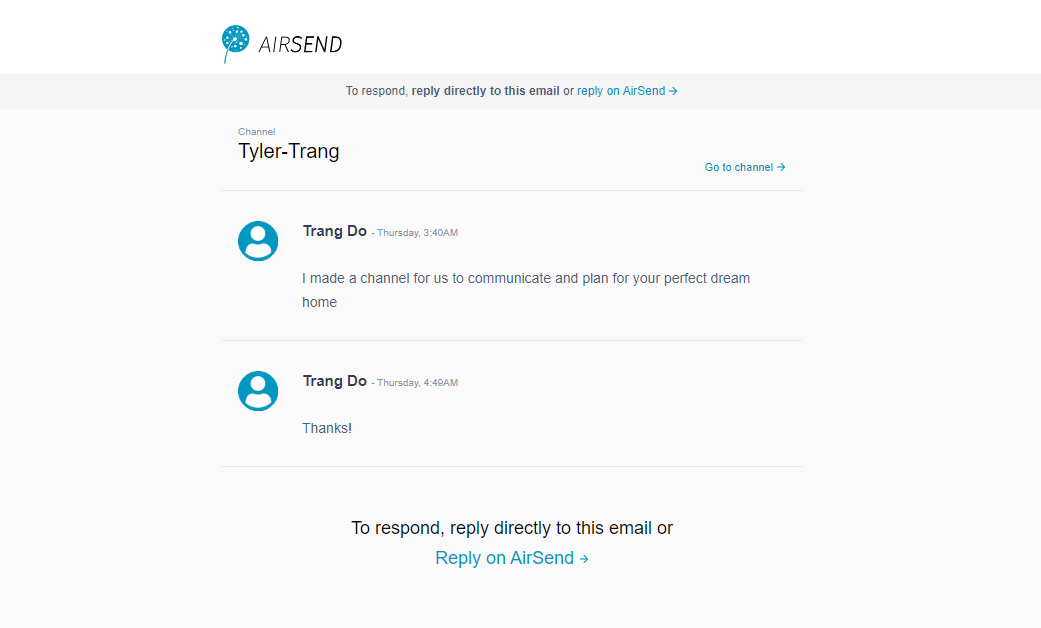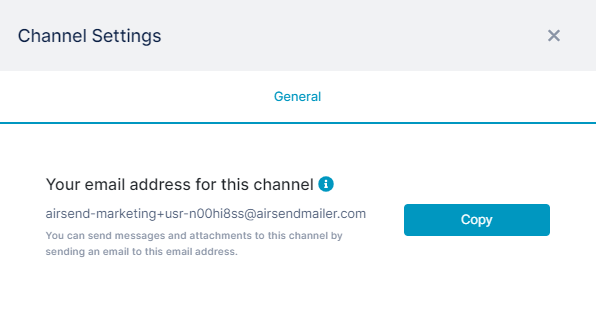
We have recently launched an update that enables clients who do/do not have an AirSend account to email file attachments, images, and videos directly to their AirSend channel! We’ll give you a moment to digest this. We know, it is amazing too.
What is Email to Channel Feature?
This new feature allows you and your clients to send a message via email directly to your channel. The beauty of it all is that it requires little-to-no effort to do. Say, for example, you are a real estate agent and you need a buyer representation agreement from your client. How do you let your client know you need the documents?
Well, now you have three options:
- One, you can message your client directly from your AirSend channel.
- Two, you can reply from your email using your unique channel email address.
- Three, you can respond via email to an AirSend channel notification (see pictures below).
If your client does not have an AirSend account, no problem!
Here is what they do:
- Hit reply from their AirSend channel notification
- Attach the required documents needed
- Hit send.
The documents will magically appear in the designated channel. Having this feature allows for easier organization of files. Did you also know that sending messages to your channel through email can act as a reminder for yourself?


Sharing Files Efficiently
Let’s give another example. Let’s say there is a channel designated for hiring. This channel has five members. Rather than having one email listed on your hiring page, you can now put your unique channel email address. By doing so, applicants’ resumes will be sent directly to the human resource channel, where everyone can view the resumes. This feature minimizes the time it takes for five separate members to view a resume in five separate emails. Additionally, this feature opens up many use cases, such as a shared inbox (i.e. channel) for hiring managers, or as an endpoint for a website contact form.
With AirSend, the possibilities are endless. For a continuous update on our non-stop productivity train, click here.
